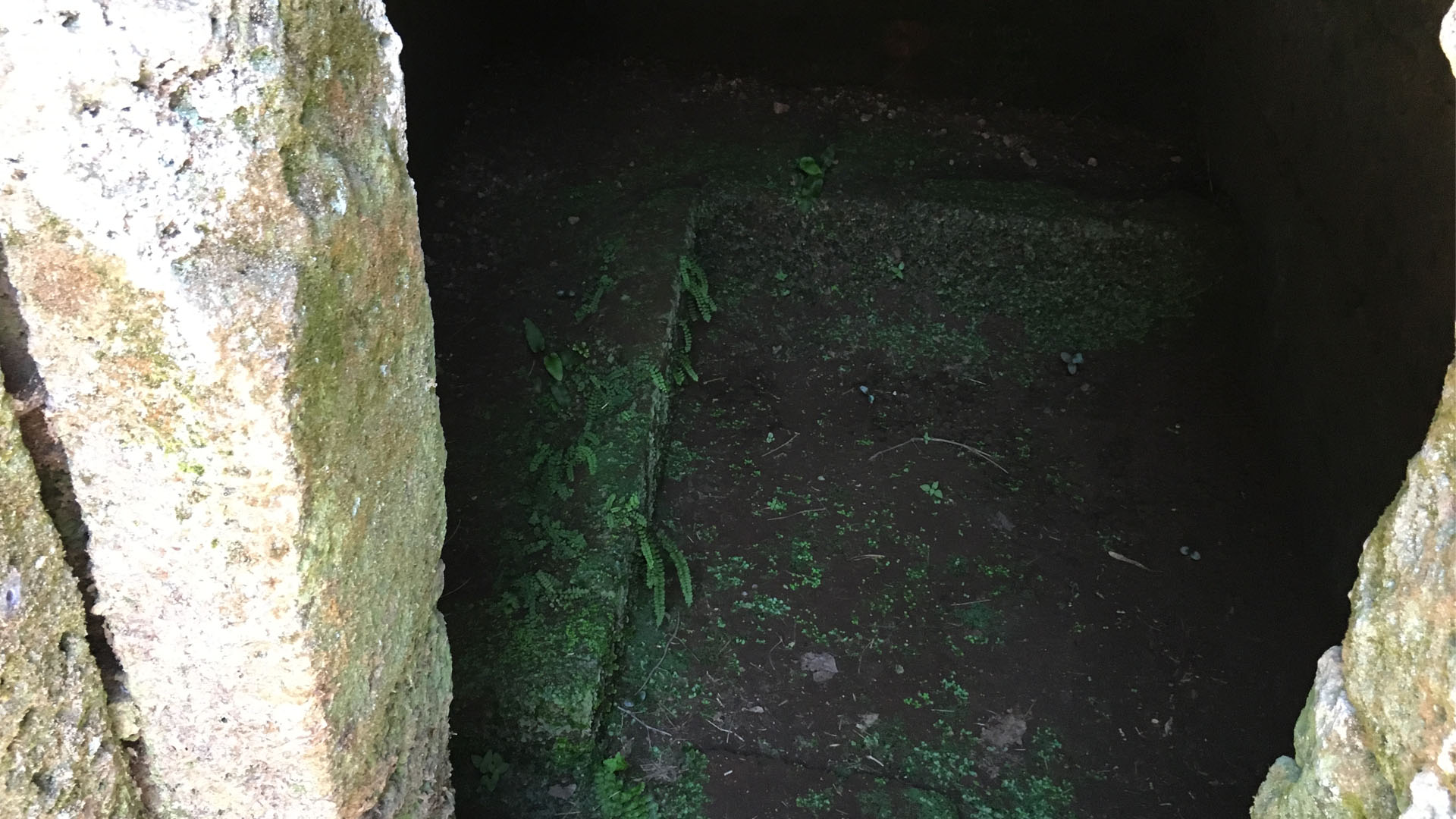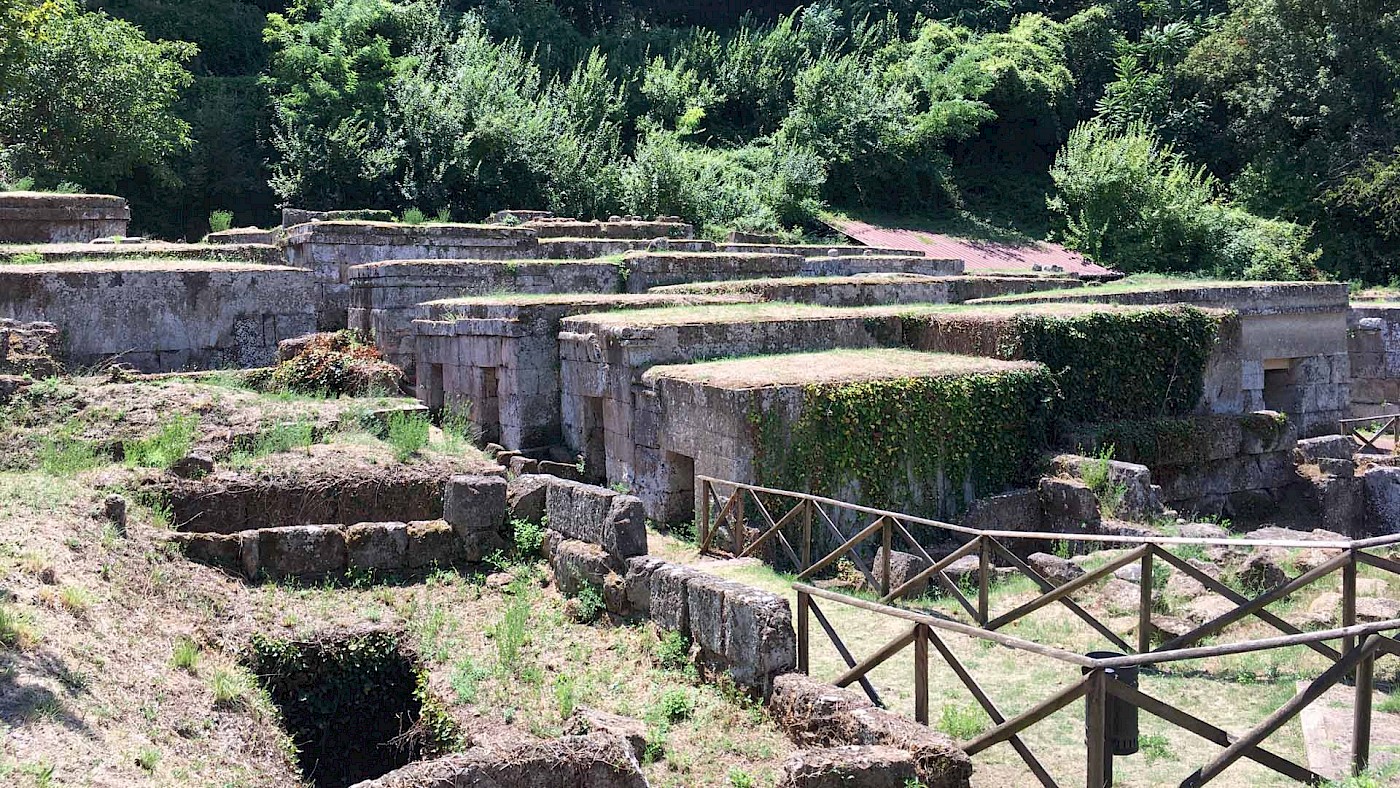Just a few weeks ago, I got married. My wife and I spent our honeymoon traipsing around Umbria, a beautiful region in Central Italy. Umbria is entirely landlocked, bordering Tuscany to the west, Lazio (Latium) to the south, and Marche to the east. We’ve spent quite a bit of time in the region, so I’ll be writing about the archaeological sites and museums in Umbria over the next few weeks.
Orvieto, a city located in the south, close to the border with Lazio, is a convenient place to start our survey. The old town lies on the relatively flat summit of a large, steep hill made of volcanic tuff. The first inhabitants were people of the ninth century BC that belonged to the so-called Villanova Culture, the progenitors of both the Etruscans and the Romans. Some modern scholars believe that the Etruscans named the town Velzna, but there’s some disagreement about this identification.
A little below the modern town, on the northern side of Orvieto’s cliff face, lie the remains of an ancient Etruscan necropolis, a site referred to today as Crocifisso del Tufo. This cemetery dates to the sixth century BC. Just like most ancient Mediterranean burial grounds, it flanked one of the main roads that led to the original Etruscan town.
Lizards and flies
When we went to the necropolis, we arrived around one in the afternoon, the hottest time of the day in early August. But the site proved to be worth the effort and sweat. What I was struck by most were the large numbers of lizards scurrying around the ruins of the ancient Etruscan chamber tombs.
There were so many lizards that the place had that distinctive reptilian odour familiar to anyone who’s kept lizards as pets, or who has been to the reptile house of a zoo on a hot day.

While outside, in the glare of the sun, it was incredibly hot, with temperatures close to 40 degrees Celsius, the inside of the tombs were refreshingly cool and damp. Moss grew on the stones of the ancient sepulchres and ferns flourished inside the dark chambers. The tombs were also swarming with flies, perhaps seeking refuge from the heat. They provided ample prey for the hungry lizards, as well as for the many spiders that had diligently spun their webs across some of the doorways.
The word “necropolis” derives from the Greek and literally means “city of the dead”. The Etruscan tombs resemble houses, with walls, roofs, and doors. Rows of these buildings are separated from others by narrow streets. The tombs themselves are partially dug or cut into the ground, so that their floors are a little lower than street level. The doors are also fairly low, so that you not only have to climb down a few steps, but also need to crouch a bit to go inside.

Some of the tombs, made from local tuff, possess featureless rooms, while others have low benches. Etruscans practised cremation, but as was usual in ancient times the cremated remains were collected after the fire had been put out and placed into urns. Etruscan urns were made of stone, shaped and decorated to look like small sarcophagi. However, at least one tomb included the remains of a man who had been interred there whole (i.e. inhumation, rather than cremation).
As far as I could tell, none of the urns are actually on display at the archaeological museum of Orvieto. However, many specimens can be found in the massive museum in Perugia, about which I’ll write more in a future article. The urns, along with other offerings and grave goods, were originally put on the benches when available, or on the floor if there were no benches, or when there was simply no more room.

A selection of the grave goods can be admired in the relatively small, but informative archaeological museum in the town. The finds include imported Greek pottery (mostly black-figure), as well as jewellery, and a set of three dice from the second half of the sixth century BC.
Originally, the tombs were sealed using a stone slab and loose stones, which were removed whenever the remains of another deceased family member had to be placed inside. Grave stones on the roofs served to easily mark the different tombs from a distance.
Furthermore, many of the tombs feature an inscription above the door that identifies the owner of the tomb in question. The Etruscans used a Greek alphabet, which aids in our understanding of what they wrote. One example is tomb 146: mi latin[ie]s kailes (“I belong to Latinie Kailes”). Another example is tomb 147, which reads: mi aveles metienas (“I belong to Avele Metienas”).
Closing remarks
Archaeological research at the site is still ongoing, with new tombs still being excavated. Most of the tombs have collapsed over time, so in many instances they were restored to what they originally must have looked like. In some cases, freshly-cut stones or even concrete has been used in the restoration of the tombs, which is easily distinguished from the original tuff blocks used by the Etruscans.
Umbria is a beautiful region in Italy – verdant and pleasant. It features a large number of places that are of interest to anyone who loves the ancient world, and this Etruscan necropolis is well worth a visit. However, reaching this site by public transport can be a bit tricky. If you go to Umbria, I recommend you rent a car. There’s a convenient parking lot right next to the archaeological site.
